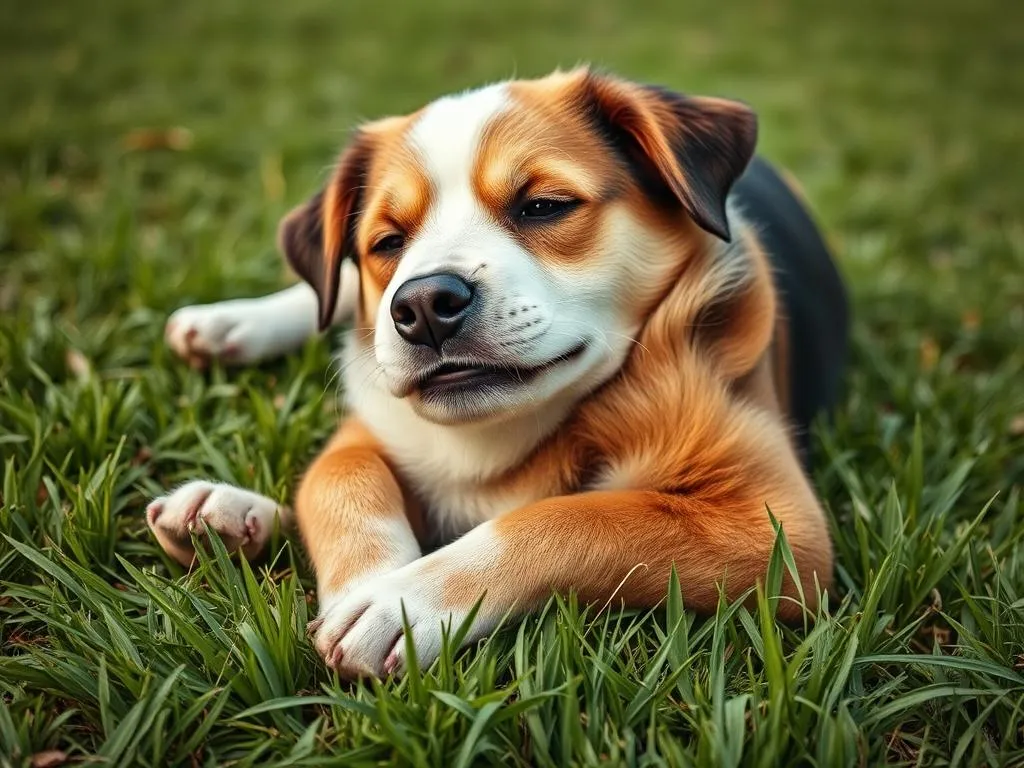
Introduction
Dog behavior is a fascinating aspect of canine care that can reveal much about a dog’s health, happiness, and instincts. One common and often amusing behavior observed in dogs is rolling in the grass. This seemingly simple action can have a variety of underlying reasons, and understanding them is essential for every dog owner. In this article, we will explore the reasons behind this behavior, its implications for your dog’s well-being, and how to enjoy these moments with your furry friend.
The Basics of Dog Behavior
What Influences Dog Behavior?
Dog behavior is influenced by a mix of genetic, environmental, and social factors.
- Genetics and Breed Characteristics: Different breeds possess unique traits that can influence their behaviors. For example, hunting breeds may have stronger instincts to roll in scents than companion breeds.
- Environmental Factors and Upbringing: A dog raised in a stimulating environment may display different behaviors compared to one that has experienced minimal socialization or exposure to different stimuli.
- Socialization and Training: Positive interactions with other dogs and humans can shape a dog’s behavior, encouraging healthy habits and reducing anxiety-driven behaviors.
Common Dog Behaviors Explained
Dogs exhibit a variety of behaviors, such as barking, digging, and rolling. Understanding these behaviors often requires looking into their instinctual roots. Rolling in the grass can be a multifaceted behavior that serves several purposes, ranging from instinctual actions to playful expressions.
The Science Behind Rolling in the Grass
Instinctual Behaviors
Historically, wild canines displayed behaviors that have been passed down through generations. Rolling in the grass can be traced back to these ancestral behaviors, where dogs would roll in various scents to camouflage themselves from predators or prey.
Sensory Exploration
Dogs experience the world largely through their noses. Their olfactory system is highly developed, allowing them to pick up on scents that are imperceptible to humans. The tactile sensation of grass can also be enjoyable for dogs, providing a soft surface to roll on and explore.
Reasons Why Dogs Roll in the Grass
Scent Masking
One prominent reason why dogs roll in the grass is for scent masking. In the wild, canines would roll in various scents to disguise their own smell, making them less detectable to prey or predators. This instinctual behavior often surfaces in domestic dogs, particularly when they encounter new or interesting scents in a grassy area.
Playfulness and Joy
Rolling in the grass is also a sign of playfulness and joy. Many dogs express their happiness through this behavior, especially during playtime outdoors. The act of rolling can be a way for dogs to engage with their environment and channel their energy in a positive manner.
Comfort and Relief
Sometimes, dogs roll in the grass to find comfort and relief. This behavior can be a response to itching or irritation caused by allergies, insect bites, or skin conditions. Grass can provide a natural, soothing surface that helps alleviate discomfort.
Territory Marking
Another reason dogs roll in the grass is related to territory marking. By rolling in an area, dogs leave their scent behind, signaling their presence to other animals. This behavior is part of their instinctual need to establish territory and communicate with other dogs.
Health Considerations
When Rolling Becomes Concerning
While rolling in the grass is generally a normal behavior, there are times when it can indicate an underlying health issue. If your dog is excessively rolling or seems distressed while doing so, it may signal a problem. Common ailments that could cause this behavior include:
- Skin Irritations: Allergies or infections may lead to discomfort.
- Parasites: Fleas or ticks can cause itching that prompts rolling.
- Pain: Any discomfort in the body may lead a dog to seek relief by rolling.
Keeping Your Dog Safe While Rolling
To ensure your dog’s safety while enjoying rolling in the grass, consider the following tips:
- Avoid Pesticides: Ensure that the grass has not been treated with harmful chemicals that could affect your dog’s health.
- Check for Hazards: Be aware of potential dangers in grassy areas, such as sharp objects or toxic plants.
- Routine Health Checks: Regular vet visits can help identify any underlying health issues that may contribute to excessive rolling.
Training and Redirecting Behavior
Encouraging Positive Rolling
If your dog enjoys rolling in the grass, you can encourage this behavior as a fun and safe activity. Here are some tips to make it enjoyable:
- Incorporate Playtime: Engage in games that allow your dog to roll, such as fetch or tug-of-war. This can enhance their experience and provide exercise.
- Create a Safe Environment: Designate a grassy area free from hazards where your dog can play and roll freely.
Redirecting Excessive Rolling
In cases where dogs roll excessively or inappropriately, training may be necessary. Here’s how to approach this:
- Identify Triggers: Observe when and why your dog rolls excessively. This can help you understand if there are specific stimuli causing this behavior.
- Positive Reinforcement: Use treats or praise to redirect your dog’s attention to other activities when they begin to roll excessively. This can help them associate rolling with positive outcomes only in certain contexts.
Conclusion
Understanding why dogs roll in the grass can enhance the relationship you share with your canine companion. This behavior is often a mix of instinct, playfulness, and comfort, reflecting your dog’s unique personality. By paying attention to your dog’s rolling habits and ensuring their well-being, you can foster a deeper bond and enjoy the quirks that make dogs so lovable. Embrace these moments, as they are an essential part of your dog’s natural behavior and joyful spirit.









